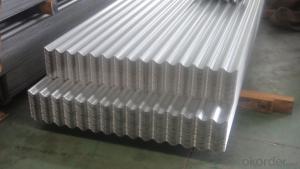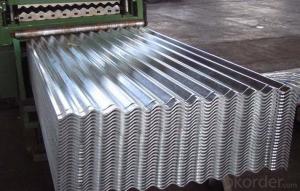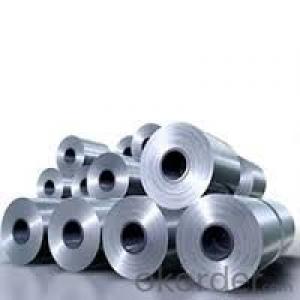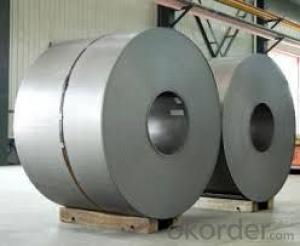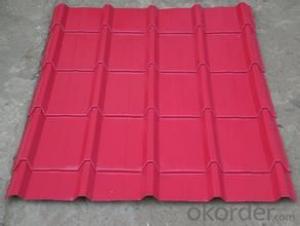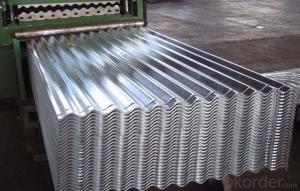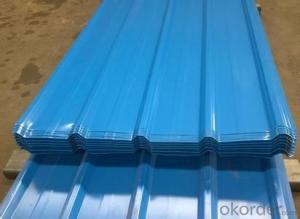galvanized metal roofing prices / galvanized steel sheet
- Loading Port:
- Shanghai
- Payment Terms:
- TT OR LC
- Min Order Qty:
- 10 m.t.
- Supply Capability:
- 100000 m.t./month
OKorder Service Pledge
OKorder Financial Service
You Might Also Like
Galvanized corrugated sheet / Steel iron corrugated plate
1) Standard: ASTM, GB, JIS
2) Grade: SGCC/DX51D/SGCH
3) Specification: Thickness: 0.13-0.5mm
Width: 665mm--914mm
Length: 1000mm-3660mm
4) Application: Roof and wallboards Wallboards, ceiling boards, window panel
Standard | AISI, ASTM, BS, DIN, GB, JIS, etc |
Grade | SGCC, DX51D, DX53D, DX54D, etc |
Thickness | 0.15-1.2mm |
Effective Width | After Briquetting: 790-1025mm |
Waves | 8-15 |
Length | 1000-6000mm |
Zinc Coating | 60g/m2-180g/m2 |
Spangle State | regular spangle, small spangle, big spangle, non-spangle |
Color | According to your requirements. |
- Q: Are steel sheets resistant to termites?
- Steel sheets are not immune to termites, contrary to materials like concrete or steel. Termites can effortlessly invade steel sheets and devour the wood framing or any organic substances that might be there. Thus, it is crucial to implement necessary precautions to safeguard steel sheets from termite infestation. These measures may include utilizing termite barriers, treating the adjacent soil, or routinely examining and upkeeping the region to deter termite intrusion and destruction.
- Q: What are the different jointing methods for steel sheets?
- There are several different jointing methods for steel sheets, including welding, riveting, adhesive bonding, and mechanical fastening.
- Q: Can steel sheets be used for signage or advertising boards?
- Yes, steel sheets can be used for signage or advertising boards. Steel is a durable and versatile material that can withstand outdoor elements, making it suitable for long-lasting signage. It can be easily cut, welded, and painted to create customized and eye-catching advertising boards.
- Q: Are steel sheets suitable for fire-resistant applications?
- Yes, steel sheets are suitable for fire-resistant applications. Steel is known for its excellent fire resistance properties. It has a high melting point and does not easily ignite or contribute to the spread of fire. Steel sheets can be used in various fire-resistant applications such as fire doors, fire-rated walls, and fireproof enclosures. Additionally, steel sheets can be combined with other fire-resistant materials, such as fire-resistant coatings or insulation, to further enhance their fire resistance. Overall, steel sheets are a reliable choice for fire-resistant applications due to their durability, strength, and ability to withstand high temperatures.
- Q: Can steel sheets be used for manufacturing security doors?
- Yes, steel sheets can be used for manufacturing security doors. Steel is a strong and durable material that provides enhanced security and protection, making it well-suited for manufacturing security doors.
- Q: How are steel sheets protected during shipping?
- Steel sheets are typically protected during shipping by being wrapped in a layer of plastic or paper, and then secured with steel bands or straps to prevent movement and potential damage. Additionally, wooden or steel pallets are often used to provide a sturdy base and further protect the sheets during transit.
- Q: Are steel sheets available in different grades of stainless steel?
- Different grades of stainless steel are available, providing a range of options for steel sheets. Stainless steel is a versatile material widely used in industries like construction, automotive, and manufacturing due to its corrosion resistance and durability. Stainless steel has several grades, each with unique properties and composition. The most common grades are 304, 316, 430, and 201, which vary in chemical composition, including the amount of chromium, nickel, and other alloying elements. The choice of grade depends on the specific application and desired characteristics of the steel sheet. For instance, grade 304 is commonly used for general purposes because of its excellent corrosion resistance and strength. On the other hand, grade 316 is often preferred in environments with high exposure to corrosive elements, such as marine applications. Steel sheets are available in different thicknesses, sizes, and finishes, making them suitable for various applications. Whether you require stainless steel sheets for architectural purposes, food processing equipment, or industrial machinery, there is a grade that can meet your requirements. To ensure you select the appropriate grade of stainless steel sheet, it is important to consult with a supplier or manufacturer. They can provide guidance based on factors like the intended use, environmental conditions, and budget constraints. Ultimately, the availability of different grades of stainless steel sheets ensures there is a suitable option for diverse applications.
- Q: Can steel sheets be used for metal fencing?
- Yes, steel sheets can be used for metal fencing. Steel sheets are commonly used in the construction of metal fences due to their durability, strength, and resistance to corrosion. They can be easily fabricated and installed to create a sturdy and secure fencing solution.
- Q: Are the steel sheets suitable for automotive applications?
- Steel sheets are an excellent choice for automotive applications due to their exceptional strength, durability, and versatility. The automotive industry widely employs steel because of these qualities. It offers outstanding crash resistance, making it perfect for ensuring passenger safety in vehicle structures. Furthermore, steel sheets can easily be molded into intricate shapes, enabling the production of various automotive components like body panels, chassis, and frames. Steel also possesses excellent corrosion resistance, which is crucial for enduring harsh environmental conditions. In addition, it is cost-effective and readily accessible, making it a preferred option for automakers. All in all, steel sheets prove to be a dependable and fitting material for automotive applications.
- Q: Can steel sheets be used for manufacturing storage tanks?
- Yes, steel sheets can be used for manufacturing storage tanks. Steel is a durable and strong material that can withstand high pressures and is resistant to corrosion, making it suitable for storing various substances.
Send your message to us
galvanized metal roofing prices / galvanized steel sheet
- Loading Port:
- Shanghai
- Payment Terms:
- TT OR LC
- Min Order Qty:
- 10 m.t.
- Supply Capability:
- 100000 m.t./month
OKorder Service Pledge
OKorder Financial Service
Similar products
Hot products
Hot Searches
Related keywords
